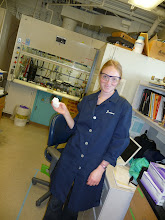Did you ever wonder why diamond is the hardest naturally occurring mineral? Or whether diamonds really "are forever" as jewelry advertisements always claim?
Let's start by looking at how diamond is formed and how it is different from other allotropes (different forms of an element characterized by differences in bonding between the individual atoms) of carbon, a few of which are shown in Figure 1.
Diamond forms from carbon-containing compounds under harsh conditions found deep within the Earth's mantel: extremely high temperature and pressure. It consists of a covalently bonded network of tetrahedral carbon atoms (Figure 1, where n is greater than or equal to 6, technically).
Graphite, another common allotrope of carbon, consists of stacked layers of covalently bonded carbon networks. Unlike diamond, however, it is quite soft (you may have encountered it in pencils, going by the name of "lead"). You might be surprised that such a seemingly small rearrangement of the carbon atoms could produce such a dramatic change in physical properties.
As a matter of fact, the differences between diamond and graphite are vast. Let's consider their relative stabilities. On the one hand, graphite is slightly more thermodynamically stable than diamond. But the energy barrier to convert diamond into graphite is extremely high, such that the conversion would be very difficult to achieve in the lab or in nature. In order to transform diamond into graphite, or graphite into diamond, one would need to break all the carbon-carbon-carbon-carbon bonds and reform them in an entirely different way. So although diamond is not thermodynamically stable it is kinetically stable, sometimes referred to as metastable.
At least as far as carbon allotropes are concerned, diamond is "forever."
Let's start by looking at how diamond is formed and how it is different from other allotropes (different forms of an element characterized by differences in bonding between the individual atoms) of carbon, a few of which are shown in Figure 1.
Diamond forms from carbon-containing compounds under harsh conditions found deep within the Earth's mantel: extremely high temperature and pressure. It consists of a covalently bonded network of tetrahedral carbon atoms (Figure 1, where n is greater than or equal to 6, technically).

Graphite, another common allotrope of carbon, consists of stacked layers of covalently bonded carbon networks. Unlike diamond, however, it is quite soft (you may have encountered it in pencils, going by the name of "lead"). You might be surprised that such a seemingly small rearrangement of the carbon atoms could produce such a dramatic change in physical properties.
As a matter of fact, the differences between diamond and graphite are vast. Let's consider their relative stabilities. On the one hand, graphite is slightly more thermodynamically stable than diamond. But the energy barrier to convert diamond into graphite is extremely high, such that the conversion would be very difficult to achieve in the lab or in nature. In order to transform diamond into graphite, or graphite into diamond, one would need to break all the carbon-carbon-carbon-carbon bonds and reform them in an entirely different way. So although diamond is not thermodynamically stable it is kinetically stable, sometimes referred to as metastable.
At least as far as carbon allotropes are concerned, diamond is "forever."





No comments:
Post a Comment